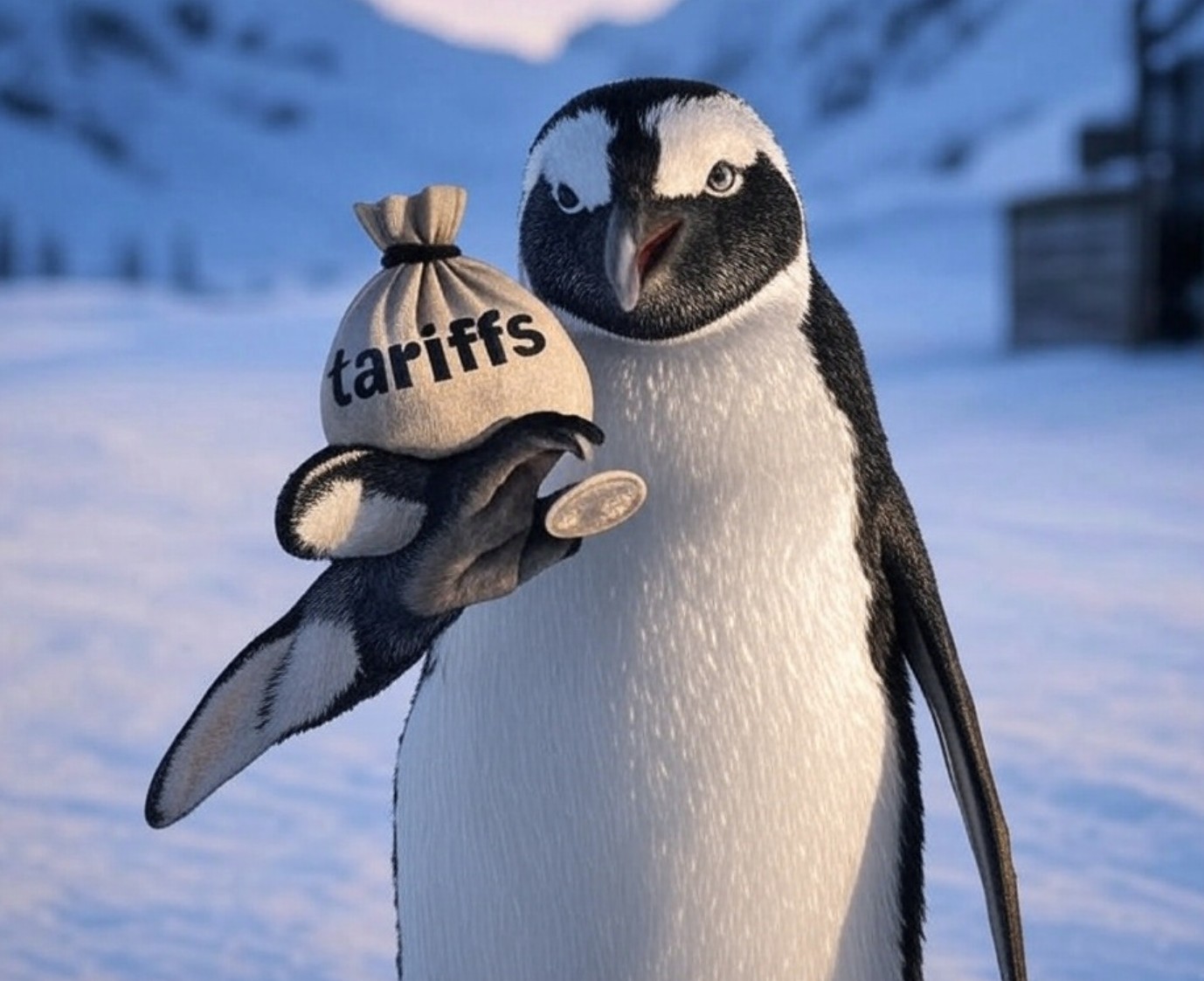Well folks, here it is. That time of year where we all hopefully are starting to wind down. Kids are coming out of school, people are getting excited for their upcoming vacations, assuming that they have an up to date passport and all of Calgary is preparing for Stampede in their own unique way. Whether that is dusting off the cowboy costumes for another year of fun or high-tailing it out of town doesn’t really matter – I’m all about tradition.
Another tradition this time of year is the ritual bloodletting for people foolish enough to invest in energy stocks. Like me. The last few months have been a rollercoaster. Lots of stocks that hit highs in 2022 are seeing their market cap smashed through a combination of relentless recession anticipation, overblown China fears, an obsession with miniscule moves in storage numbers (AHA!) and a belief that EVs are somehow going to completely replace the ICE fleet in a couple of weeks – all while the Biden administration continue to fumble-f*** its way around energy policy.
Meanwhile, demand for oil continues to blow the doors off everyone’s forecasts, the US refuses to recess, China is sorting out its mess and, the last time I checked, the only actual spare capacity for oil is OPEC+, Saudi Arabia to be specific and they are definitely NOT in a hurry to open any taps.
The result? A 5% pullback in energy stocks… YESTERDAY! A top two worst performance for the sector on par with the early days of the pandemic and the global financial meltdown.
Seems reasonable right? Especially when you think about in the context of an energy supply constrained world with growing demand, China emerging from lockdown version 3.6 and energy stocks that are cash gushers and still undervalued on a historic basis.
But who said markets had to make sense. Bitcoin, right?
Another tradition this type of year is someone other than a Canadian team winning the Stanley Cup. Although to be fair, Las Vegas gets the “honorary” Canadian team tag since they had the largest number of Canadians playing for them in the whole tourney (take that Edmonton and Toronto).
The last tradition of course is the gratuitous trip down memory lane. I do this every year at this time, mostly because I’m lazy and I tend to do a fair amount of blog repetition, but also because summer is coming and it is, in fact, time to slow down a little bit. Plus, as some of you no doubt know….
It’s my damn birthday, so you get the birthday blog.
I started the birthday blog when I hit Freedom 55, which as anyone who works in the energy industry knows is an absolute pile of horse-hockey.
This year I am sadly turning 58. Or happily. Anyone who works in the nergy industry has to be happy, even if it’s officially the worst industry on the planet – an environment and fortune-killing spewer of carbon evil, mere steps away from taking the planet down for the count, never to recover. It’s like the Godfather, you keep trying to leave but it keeps sucking you back in.
OK, not really. The energy industry has been just fine to me and my family.
And the energy industry, writ large to include all forms of energy (because it should), is actually doing pretty well right now. Despite recent market gyrations, prices are up, demand is recovered, supply is constrained, energy anxiety is increasing, inflation is rampant and everyone hates Big Oil. Ever wonder why no one talks about Small Oil? Anyway, these are all the building blocks we need to get some attention paid to what is, let’s face it, one of the more important industries on the planet, a key to our long-term survival as a species and the backbone of our way of life.
But I am getting ahead of myself. I’m not here to talk about energy. Well not exactly.
Looking back to when I officially joined the Freedom 55 cohort and thought that the pandemic was over (how’d that work out?) I was giddy at the prospect of all the goodies and super-cool seniors benefits and discounts that I was suddenly qualified for such as 20% off at Golden Griddle (excludes alcohol); 20% off at Shoppers and 20% off at Value Village.
Not to mention the best senior’s discount. The ability to put 20% less effort into the blog anytime I want, freeing up time to tell people to get off my lawn.
At any rate, true to tradition, each year I throw together a lazy list of energy and/or random thoughts. This year there are 58 of them. Holy crap. My daughters think I am super-old. And they may be right, but you only feel old thinking about Canadian teams winning Stanley Cups. It’s been that long.
At any rate, before I “retire” for the day and start my long weekend… Here are 58 pithy, insightful and random observations – primarily about the oil and gas sector.
- Just like last year, we are depending on OPEC+ to help us out with the price of oil. Where last year we were flirting with $110 and concerned about inflation crushing the economy, this year we are dealing with $70 oil, $2-$3 gas, looming supply issues, persistent inflation, war in Europe and compulsively negative market sentiment.
- The natural gas industry in Canada has actually been a beacon of stability now for four years. Go figure.
- The Saudis have run OPEC+ like the true masters of the oil industry they are. After successfully throttling the US shale industry, the KSA has overseen the longest period of OPEC+ solidarity ever seen and successfully deflated the oil inventory bubble that threatened the industry. And made a bazillion dollars in the process. Well played.
- North America has more than 3 million miles of oil and gas pipelines, split roughly 80/20 between the United States and Canada. 1800 miles of KXL will never be part of this.
- Since I was born in 1965, there have now been 4 major oil price shocks including exactly one day when prices were negative. Each time the market recovered. Go figure.
- I am older than OPEC
- Having achieved Freedom 55 three years ago and planning to work until I’m at least 102, I am reminded that my youngest daughter’s teacher played an investment advisor in one of the classic Freedom 55 ads. I guess I could have learned a thing or two from that ad.
- In 1965, the American’s closest ally in the Middle East was Iran
- The first real frac job ever recorded was in 1865 (100 years before I was born!) in Titusville Pennsylvania when Civil War veteran Col. Edward A.L. Roberts (not a real colonel!) lowered a torpedo into an oil well, covered it with water and detonated it, vastly improving the well’s yield.
- The first commercial hydraulic frac was in 1950.
- Since that time, frac’ing has significantly improved, but the process is still the same – jam something (water, sand/mud, explosives) under massive pressure into a well until the rock fractures and the molecules/liquid flow to the surface. Biggest difference between now and then? Efficiency. Safety. Less explosives. I guess we can’t forget that. Boom.
- The longest horizontal frac on record is about 18,500 ft, drilled in the Utica Shale, which is a natural gas play. Total depth was about 27,000 ft. So 1.5 miles down and 3.5 miles horizontally. 124 frac stages.
- The largest frac job ever utilized close to 50 million pounds of sand or proppant in a Haynesville shale well in Louisiana. The lateral length of the well was about 10,000 ft. As a point of reference, the Eiffel Tower weighs 14 million pounds and is just under 1,000 ft tall.
- “Frac hits”, a phenomenon where laterally drilled wells start to run into vertical and horizontal wells belonging to other operators continue to plague large scale drilling operations in the United States. This is leading to much legal work. Seriously folks – 5 miles of drilling in multiple directions from a multiwell pad and held open by 3 and a half Eiffel Towers worth of drill pipe, sand and water – is anyone really surprised companies are running into each other?
- Canada has the 3rd largest reserves of oil in the world and the 10th largest reserves of natural gas
- Canada is the only country in the world that basically has only one customer for its largest export
- The energy sector, broadly speaking, represents between 10% and 15% of Canadian GDP.
- Put another way, 15% of our national wealth depends on the exploitation of these reserves, our 500,000 miles of pipeline and the goodwill of one country
- In 2019, Canada was recognized as having one of the most stringently regulated oil and gas industries in the world. The jury is still out in 2023 as to whether we still have that position – something about leaky ponds.
- It is estimated that in Russia the equivalent of 50,000 bpd of oil is spilled annually (5% of production). That would be like half of the production of the massive Surmont SAGD facility in Fort Mac being dumped into the Athabasca River every day!
- Venezuela is an environmental and societal basket case, has the actual largest oil reserves in the world and has seen production collapse from 3.5 mm boepd to less than 0.5 mm and now requires black market refined fuel imports from Iran.
- The environmental degradation of Venezuelan oilfields and facilities from lack of investment and little to no regulation is likely to never be cleaned up… I repeat, never. Ever. You can light Lake Maracaibo on fire. But hey, Canada is a bad guy. https://www.caracaschronicles.com/2020/11/25/swimming-and-fishing-in-a-sea-of-oil/ https://www.caracaschronicles.com/2020/10/20/venezuela-is-on-the-brink-of-its-worst-oil-spill/ https://www.caracaschronicles.com/2019/09/07/how-oil-killed-lake-maracaibo/
- Notwithstanding the preceding two points, the Biden Administration, in an effort to curb gas prices, is perfectly willing to lift sanctions on evil Venezuela to score some cheap heavy oil rather than, you know, let a friend build a new pipeline
- Global spend in the oil and gas sector averages about $2 trillion a year, about $200 billion more than Canada’s annual GDP. Of that, about $600 billion is typically spent on exploration and new production
- Global E&P capex in oil and gas is expected to increase to $600 billion in 2023 as we continue to try and catch up to more than a decade of underinvestment everywhere except the US. This is about $100 billion short of where we need to be. Oops!
- In Canada, upstream capital spending (not including maintenance) in the oil and gas sector is expected to increase to about $27 billion this year.
- Of the $11 billion spent on environmental protection in 2012 (last year data available, gotta love government), 43% was spent by the oil and gas industry. The next closest industry spent 12%
- Total spending on tangible environmental protection by Canada’s environmental lobby groups since I was born in 1965 has been about $0.
- The first politician whose name I ever heard and recognized at age 3 was named Trudeau. Now, a mere 55 years later (freedom!), it’s the same damn name in charge, except he has more hair. Go figure.
- Western alienation is a big deal that I didn’t understand when I was 3. Oddly enough, this guy got it https://www.cbc.ca/archives/entry/trudeau-not-worried-about-western-alienation
- The oil and gas sector is one of the largest employers of First Nations people in Canada.
- Suncor employs more First Nations people than the Federal Government
- In 1965, global consumption of oil was just over 30 million barrels of oil a day. In 2019 it was about 100 million barrels a day. In 2020, it fell to about 91 mm bpd at it slowest. It took a pandemic and global economic shutdown to stop this growth. In 2021, consumption closed the year at 96.5 mm bpd. In 2023, consumption is expected to be 102 million barrels and is expected to resume it’s 1% a year growth for… who knows how long. I sure don’t, so don’t believe anyone who says they do.
- In 1965, North America (Canada/US) produced about 10.9 million bpd (32% of global production of 34.5mm bpd) and in 2023 that number is expected to be about 18 million (which you would think would be 17% of supply, but it’s actually a bit higher, since we aren’t producing as much as we consume)
- In 1965, the Middle East produced about 9.4 million bpd (27%) and in 2023 that number was about 24 (25%). Total all-in OPEC production is currently about 33% of total global production
- There are currently more than 300 million vehicles in the United States. At current rates of production, it will take about 100 years to replace all of them with electric vehicles.
- Alternatively, annual vehicle sales in the US are about 17 million. If all vehicles sold from this day forward were EV’s, it would take about 60 years to replace the fleet. And you’d still likely have about 150 million gas powered vehicles on the road. People like to have 2 vehicles. I own 5.
- In the early 2000’s, total fossil fuels’ share of the energy market was about 85%. Since then, trillions of dollars have been invested in renewables such that fossil fuels current share of the energy mix is… Yup, you guessed it, 85%.
- Pre-COVID, no country was on track to meet their Paris Accord emissions targets, except France. And maybe the US, which has seen major reductions in emissions, ironically thanks to accelerating gas production edging out coal for power. Ironically, the whole pitch behind exporting Canadian LNG to Asia
- Post COVID, no country is on track to meet its Paris Accord emissions targets. Except maybe France and the US. Especially since the European gas crisis due to the Ukraine/Russia war is forcing EU countries to restart their coal-fired generators.
- 40% of the world’s ocean cargo is oil
- It took more than 100 years and trillions of dollars to build out our current fossil fuel-based infrastructure
- There are more than 1.75 million active oil and gas wells in the United States.
- There are more 225,000 active oil and gas wells in Canada
- In the United States it is estimated that the oil and gas industry supports around 10 million jobs or 5% of the labour force. Of this, close to 800,000 are directly employed in the services sector
- The US oil and gas services workforce was among the hardest hit by COVID in the world, with at least 100,000 jobs lost
- In Canada, the similar employment number is 250,000 direct oil and gas jobs and probably another 300,000 indirect jobs, with COVID related job loss likely in the range of 50,000.
- Expanding production in North America is going to be very difficult since most of those jobs lost will not be coming back. There is a massive labour shortage.
- In 2019, the US drilled some 22,000 and completed about 10,000 wells. In 2020, the US drilled less than half that. In 2023, the number of wells drilled is expected to number in excess of 25,000. In 2019, in Canada, about 5,000 wells were drilled and/or completed. Activity fell by 50% in 2020. It is expected that more than 7000 wells will be drilled in 2023 in Canada.
- On this date in 2019 there were 789 rigs drilling for LTO in the United States. Today there are 546.
- Joe Biden has dropped as much of a hammer as he can on the US energy industry. Aside from KXL being cancelled, Joe is bullish for Canadian production. Even if the media doesn’t pick up on this. But he is decidedly bearish for US production, which he counterintuitively needs to grow. Go figure. I can’t.
- Saudi Arabia still decides where the energy industry is going to go. And they like money. So, oil prices aren’t likely to collapse much further. Instead of crushing shale, they have decided to target sports – gambling can’t be far behind. More power to them.
- Only half of a barrel of oil is used for gasoline, the rest is used in more than 6,000 common products including hand lotion, football helmets, insecticides, fertilizer and fidget spinners
- In 2012, Peter Tertzakian, one of the smartest energy dudes around published a book called 1000 barrels a second, which was what global consumption was at that time – by the way it’s about 12% higher now (and still increasing). To put that in perspective, the average Permian well produces about 750 barrels of oil a day in its first year, so you would need 1.3 Permian wells to meet a second of daily oil consumption. There are 86,400 seconds in a day, so you would need close to 90,000 fully producing wells to meet one day’s worth of consumption every day. Factor in the decline rate of close to 30% and you can start to appreciate the treadmill we are on. The energy sector isn’t going anywhere, anytime soon.
- The countries with the highest use of energy per capita also have the highest life expectancy, demonstrating that access to cheap and plentiful energy is critical to increasing life expectancy and pulling people out of poverty
- The energy industry is one of the most important industries in the world and touches virtually all aspects of our lives, every day, so maligning the energy industry and blocking projects is hypocritical and denies the reality on the ground that our privileged lifestyle depends on a healthy energy economy
- Notwithstanding Coronavirus, in 2023 the private and public sector in Canada will likely be involved in the construction of close to $50 billion in energy infrastructure including thousands of kilometres of oil and gas pipeline and massive investments in LNG and petchem processing facilities. Not bad for a country mired in regulatory gridlock, coming out of a pandemic, a sector facing an existential crisis, inflation, supply chain and labour issues, non-stop elections, Justin Trudeau and, let’s face it, an indifferent population. Imagine what we could do if anyone cared!
- This is the (hopefully) backside of my fourth energy cycle as an industry participant. It’s a soul-crushing grind but it also makes you eternally optimistic. I truly believe the future is bright for Canadian energy in all its forms and am proud to play my part in helping it grow. Regardless of whether we are Stormont Capital or Stormont Energy, the companies and people who produce the energy, service it, deliver it, maintain it and clean it up when it’s been used remain our key constituency and we are committed to being part of their team for the foreseeable future, or as I like to call it – Freedom 95 (only 37 more years of blogs! Whatever will I wrote about? I really need to start using ChatGPT).
58 Bottles of beer on the wall…
Prices as at June 16, 2023
- WTI Crude: $69.07 ($71.60)
- Western Canada Select: $56.63 ($57.29)
- AECO Spot: $2.23
- NYMEX Gas: 2.78 ($2.65)
- US/Canadian Dollar: $0.758 ($0.758)
Highlights
- As at June 16, 2023, US crude oil supplies were at 463.3 million barrels, an decrease of 3.8 million barrels from the previous week and an increase of 45.0 million barrels above last year.
- The number of days oil supply in storage is 28.1 compared to 25.7 last year at this time.
- Production was down for the week at 12.200 million barrels per day. Production last year at the same time was 12.000 million barrels per day.
- Imports fell to 6.161 million barrels from 6.381 million barrels per day compared to 6.226 million barrels per day last year.
- Crude exports from the US rose to 4.543 million barrels per day from 3.270 million barrels per day last week compared to 3.572 million barrels per day a year ago
- Canadian exports to the US were 3.570 million barrels a day
- Refinery inputs fell slightly during the during the week to 16.470 million barrels per day
- As at June 16, 2023, US natural gas in storage was 2,729 billion cubic feet (Bcf), which is 15% higher than the 5-year average and about 26% higher than last year’s level, following an implied net increase of 95 Bcf during the report week
- Overall U.S. natural gas consumption rose by 1.6% during the report week.
- Production was down 0.9% for the week. Imports from Canada were up 1.9% from the week before. Exports to Mexico increased 3.0% for the week.
- LNG exports totaled 82 Bcf for the week.
- As of June 23, 2023, the Canadian rig count was up 10 at 169 (AB – 110; BC – 17; SK – 37; MB – 4; Other – 1). Rig count for the same period last year was 154.
- US Onshore Oil rig count at June 16, 2023 is at 546, down 6 from the week prior.
- Natural gas rigs drilling in the United States were flat at 130.
- Offshore rig count was down 1 at 18.
- US split of Oil vs Gas rigs is 80%/20%, in Canada the split is 40%/60%
Bizarro Factoid of the Week
There is a person on Twitter who is theorizing that Oceangate – the operator of the Titan sub that imploded was actually just running the adventure side as a demo to oil and gas so that they could develop hundreds of shoddily made submersibles to service rigs drill wells. This is so bizarre it is laughable. And shockingly ignorant.









